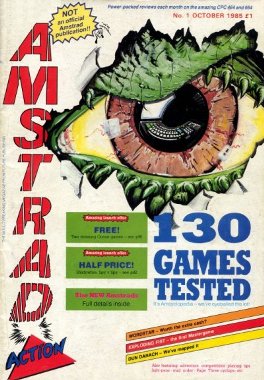
Amstrad Action was a monthly magazine, published in the United Kingdom, which catered to owners of home computers from the Amstrad CPC range and later the GX4000 console.
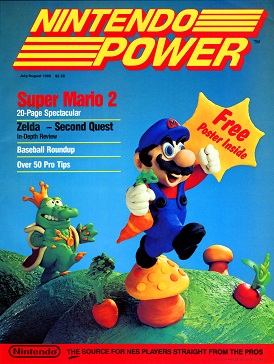
Nintendo Power is a video game news and strategy podcast and former magazine from Nintendo of America, first published in July/August 1988 as Nintendo's official print magazine for North America. The magazine's publication was initially done monthly by Nintendo of America, then independently, and in December 2007 contracted to Future US, the American subsidiary of British publisher Future. Its 24–year production run is one of the longest of all video game magazines in the United States and Canada.
InQuest Gamer was a monthly magazine for game reviews and news that was published from 1995 to 2007. The magazine was published by Wizard Entertainment.

Crash, stylized as CRASH, is a magazine dedicated to the ZX Spectrum home computer, primarily focused on games. It was published from 1984 to 1991 by Newsfield Publications Ltd until their liquidation, and then until 1992 by Europress. It was relaunched as a quarterly A5 magazine in December 2020 with the backing of the original founders.

GamePro was an American multiplatform video game magazine media company that published online and print content covering the video game industry, video game hardware and video game software. The magazine featured content on various video game consoles, personal computers and mobile devices. GamePro Media properties included GamePro magazine and their website. The company was also a part subsidiary of the privately held International Data Group (IDG), a media, events and research technology group. The magazine and its parent publication printing the magazine went defunct in 2011, but is outlasted by Gamepro.com.
1990 saw many sequels and prequels in video games, such as Metal Gear 2: Solid Snake, Dr. Mario, Dragon Quest IV, Final Fantasy III, Phantasy Star II, and Super Mario World, along with new titles such as Fire Emblem: Shadow Dragon and the Blade of Light and Magic Sword. The year's highest-grossing arcade video games were Final Fight in Japan and Teenage Mutant Ninja Turtles in the United States. The year's best‑selling system was the Game Boy, while the year's best-selling home video game was Super Mario Bros. 3 for the Nintendo Entertainment System.
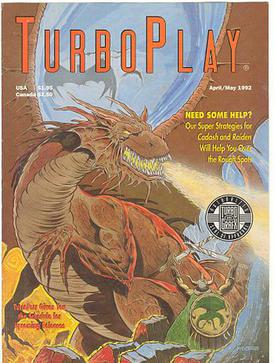
TurboPlay Magazine is a bi-monthly, U.S.-based video game magazine which was published by L.F.P. from June/July 1990 through August/September 1992. It was available via subscription only. A total of 14 issues were released, on schedule. TurboPlay exclusively covered NEC's line of video game consoles, especially the North American models: TurboGrafx-16, TurboGrafx-CD (TG-CD), Turbo Duo (DUO) and the handheld TurboExpress. NEC's SuperGrafx also received some minor coverage.

ANALOG Computing was an American computer magazine devoted to Atari 8-bit computers. It was published from 1981 until 1989. In addition to reviews and tutorials, ANALOG printed multiple programs in each issue for users to type in. Almost every issue included a machine language video game—as opposed to Atari BASIC—which were uncommon in competing magazines. Such games were accompanied by the assembly language source code. ANALOG also sold commercial games, two books of type-in software, and access to a custom bulletin-board system. After the Atari ST was released, coverage of the new systems moved to an ST-Log section of the magazine before spinning off into a separate publication under the ST-Log name.

GameNOW was a United States-based video game magazine that was published by Ziff-Davis from November 2001 to January 2004. A total of 27 issues were published. In addition to video game consoles like PlayStation 2, Xbox, GameCube, and Game Boy Advance, GameNOW also covered games for personal computers.
Bill Kunkel was a graphic novelist as well as pioneering professional wrestling and video game journalist and critic from the 1970s until his death in the early 2010s. During his time working with the video game industry, Kunkel authored numerous strategy guides, co-designed several video games, served as an expert witness in three court cases, and taught courses in Game Design for the University of Nevada, Las Vegas (UNLV). Kunkel served as the executive editor of Electronic Games Magazine and the editor-in-chief of Tips & Tricks magazine, writing columns and comics for several magazines and game sites. He often wrote under nicknames, the most common of which were "The Game Doctor", and "Potshot".

The Legendary Axe is a horizontal platform video game for the TurboGrafx-16. It was developed and published by Victor Musical Industries in Japan and by NEC in North America. It was released in Japan on September 23, 1988 and in North America as a TurboGrafx-16 launch title on August 29, 1989. In the game, the player controls Gogan, a barbarian whose girl, Flare, was kidnapped by the cult of Jagu. The player must navigate through six platforming levels, armed with a legendary axe named "Sting" to defeat Jagu and his minions and rescue Flare. The game features a rechargeable "strength meter" that determines how much damage is dealt from the axe to enemies.
Cheating in video games involves a video game player using various methods to create an advantage beyond normal gameplay, usually in order to make the game easier. Cheats may be activated from within the game itself, or created by third-party software or hardware. They can also be realized by exploiting software bugs; this may or may not be considered cheating based on whether the bug is considered common knowledge.
Igromania is a Russian video game website and formerly a magazine.

Paragon Publishing Ltd was a magazine publisher in the UK, which published computer games and other entertainment titles from 1991 to 2003.

Larry Flynt Publications, or LFP, Inc. is an American independent business enterprise that owns, manages and operates the adult entertainment businesses founded by American entrepreneur Larry Flynt. Founded in 1976, two years after Flynt began publishing Hustler magazine, LFP was originally established to serve as the legal business entity i.e. parent company of this magazine.
Andy Eddy is an American video game journalist and critic. He resides in Redwood City, California.

PlayStation Underground was an American video game magazine, originally published by Sony Computer Entertainment America. The magazine focused on the PlayStation fanbase, including gaming on the original Sony PlayStation and the PlayStation 2, and was promoted as a "PlayStation fan club". Unlike its paper-based counterpart the Official U.S. PlayStation Magazine, PlayStation Underground came in the form of CD-ROMs which could be played on the PlayStation and PlayStation 2 consoles. Subscribers were also given access to a members-only website. The magazine released its first issue on March 26, 1997 and its final issue in 2001. The magazine released a total of seventeen issues during its active years. The magazine was eventually merged with Official U.S. PlayStation Magazine in 2001 when it was discontinued.
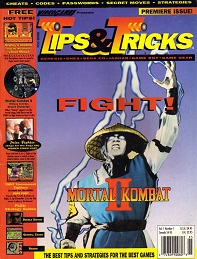
Tips & Tricks was a monthly video game magazine devoted to the subjects of video game cheat codes, strategy guides and lifestyle content. Unlike most video game magazines, it did not include critical reviews of video games and was not a primary source of video game industry news. Instead, it focused on gameplay instructions and hidden "Easter eggs" relating to games that its readers might have already purchased.
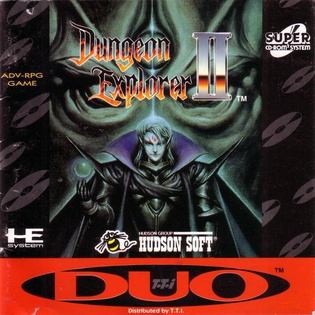
Dungeon Explorer II is an action role-playing video game developed and originally published by Hudson Soft for the TurboDuo in Japan on March 26, 1993, and in North America by Turbo Technologies in October of the same year. A sequel to 1989's Dungeon Explorer, it is the second installment in the eponymous franchise.














